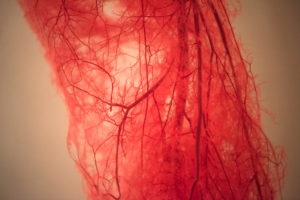 Keeping healthy veins might not be your top priority. That’s completely understandable. After all, you’ve got other things to worry about.
Keeping healthy veins might not be your top priority. That’s completely understandable. After all, you’ve got other things to worry about.
But showing a little love to your veins every day can help you avoid unsightly spider veins and potentially painful varicose veins.
Advertisement
It might be hard to believe, but there are roughly 60,000 miles of vasculature inside you. Veins, arteries, and blood vessels create a superhighway of blood, and much like the freeway taking you out of the city, even a slight backup can wreak havoc miles behind.
Arteries carry oxygenated and nutrient-rich blood from your heart, while it’s the veins that carry oxygen-poor blood back to the heart to be reoxygenated and pumped back out. When your veins aren’t healthy, this essential cycle can be disrupted.
Vein health can be affected by various health conditions, including obesity, heart disease, and diabetes. But not having one of those conditions doesn’t necessarily mean you’re in the clear. Encouraging vein health and keeping blood flowing optimally takes more than simply existing.
Two main conditions symbolizing unhealthy veins are spider veins and varicose veins. They generally occur in the legs where gravity can take over, making it harder for blood to pump up.
Advertisement
Spider veins are typically cosmetic, but they may symbolize a greater problem that can turn into varicose veins. Varicose veins occur when blood collects because vessels aren’t closing properly. New veins may try to grow around the blockage, and they can become large, twisty, and bulging over time.
These veins, caused by some traffic trouble, can lead to soreness, aches and pain, or fatigue in the legs. If left untreated, it can become more severe, potentially leading to blood clots. In fact, if your varicose veins are red, warm to the touch, or painful, you should see your doctor as soon as possible.
Of course, you don’t want to get to that point. So, what should you do? These little daily practices can help promote vein health and potentially reduce the risk for varicose veins:
- Stay active: When you’re moving, blood is flowing. There is less of a chance of blood pooling, and vessels and valves stay healthier. If you have a desk job, get up at least once an hour for 5–10 minutes to walk around.
- Keep hydrated: Water makes blood thinner, helping it to move through blood vessels more easily. Thicker blood from dehydration can exacerbate vein insufficiencies.
- Eat healthily: Nutrients and antioxidants in fruits and vegetables promote vein health and overall circulation.
